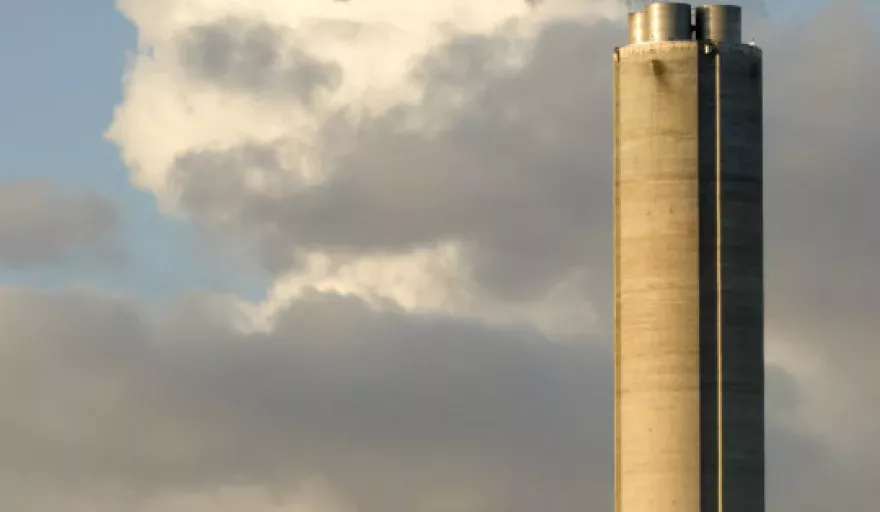Roundtable participants:
- David Porter, Senior Advisor to the Global Energy team, Navigant
- Simon Hobday, Energy Partner, Osborne Clarke
- Jacob Klimstra, Energy and Engine Consultant, Jacob Klimstra Consultancy
- Ulla Pettersson, Managing Consultant and Founder, E for Energy Management
There is growing consensus that traditional coal and gas-fired plants remain ‘un-investable’: what are the best options for optimising legacy plant operations for nations needing to maintain fossil fuel fired plant to meet baseload requirements or ensure security of supply?
Simon Hobday: Gas is in many respects a low carbon technology. It is much cleaner than coal, and it’s an excellent source for ensuring stability in generation whilst new smart technologies continue to develop – power is still required regardless of whether or not the wind is blowing.
However, deciding to commit to gas generation is currently a difficult decision. The market design and other support must give investors confidence they will be able to recover finance construction, operating costs, and make a profit; otherwise they simply will not build. If the market model does not allow this then other approaches, such as the UK’s capacity market will be needed.
David Porter: It is no longer financially viable to run existing power plants in the traditional way, and certainly not economical to build new power plants – the scope for them to run and earn an income has been reduced by the mandatory ‘must-run’ nature of renewables. But, we need plants that can provide electricity when customers want it. There’s currently a lot of discussion about how capacity mechanisms can pay for a plant to be available 24-seven and fill the gaps when intermittent renewables are not generating.
However, in Europe this is creating problems for the slowly emerging single market in electricity. Theoretically, one country ought to be able to take account of a neighbouring power station in another country if there is an interconnector between the two countries. But capacity mechanisms are being developed by individual countries, rather than centrally from Brussels, therefore they focus on particular countries’ requirements and this creates difficulties for countries that would like a proper market in electricity across Europe. It underlines where true political responsibility lies.
Jacob Klimstra: A recent conference in Brussels revealed that cogeneration in cities will play a major role in optimising legacy plant operations. The demand for heat in Europe is two or three times more than the demand for electricity, therefore only integrated power, such as combined heat and electricity generation, will be flexible enough to thrive in the new energy landscape. Remotely located large power plants are not the answer due a lack of flexibility and high costs.
Ulla Pettersson: I think that each country must have an ISO (Independent System Operator) whose responsibility is to put up auctioning capacity if needed, but this offering is stronger and weaker in different countries. However, this approach is more applicable to kick load; it is very unlikely to use capacity contribution for baseload and mid merit.
Is there a future for new-build large plants if they were to include technologies such as those based on co-firing, co-generation or CCS technology?
David Porter: I believe there is a future for new build large plants but they’ve gone through such a period of trauma, companies will need to see stability and have much more confidence in the politics of the market before anything happens. Gas which, like coal, can be run flexibly is widely accepted as a ‘bridging’ fuel in the lower carbon transition, so it will remain part of the mix. In fact, coal and gas-fired plants will be part of the market for a while to come, but the market arrangements must inspire developers and investors with more confidence than they currently do. Power companies will face huge challenges in optimising the running of their plant and making a portfolio profitable.
Ulla Pettersson: There is definitely a future for big plants because if we don’t build them we will never get out of this recession. The manufacturing industry in Europe isn’t operating at maximum capacity therefore we cannot base supply on this lower demand; otherwise we’ll face difficulties when we try to increase capacity in manufacturing industries. If we replace old plants with many small ones, the costs for staff and environmental protection, for example filters, will increase. If we don’t replace old plants, we will never be able to catch up and manufacturing will move to other parts of the world. That would be a catastrophe for Europe.
Simon Hobday: I believe there is a future in large plant but while support is being given renewable to encourage high capital cost, low marginal operating cost plant mechanisms need to be looked at to encourage the construction of large efficient plant.In the UK, the new capacity mechanism auction has secured some additional capacity but it’s still new and remains to be seen whether it will in fact serve to provide cost efficient new balancing plant. Other approaches used historically in the UK include the supplemental payment in the Pool Price prior to NETA (PIP or Pool Input Price and POP, Pool Output Price).
Jacob Klimstra: For CCS to be implemented, the price of CO₂ as to be about €80 per tonne, but this doubles the electricity production costs of coal-fired power plants. Biomass co-firing is an option to keep the CO₂ production of power plants low. However, in order to optimise energy use in Europe, power plants have to be very flexible and offer CHP facilities. However, I believe that smaller scale local power plants are the best option for the future. They can offer the required flexibility, especially if they are of a modular design.
Should national and EU policy be adjusted to ensure coal and gas-fired plants can operate alongside more intermittent forms of power generation?
Simon Hobday: If a country makes the policy decision to intervene in the power markets to promote (intermittent) renewable generation, then once the intermittent generation reaches a certain level where it affects the economic health of other plant required to balance the power system the country must I believe look at methods to support non-intermittent generation. Otherwise energy technologies such as storage which has additional cost for the consumer otherwise the lights will go out. I believe a number of countries are currently in this position.
David Porter: I think policy will have to change because of the imperative of keeping the lights on. Part of the answer is the ‘smart’ agenda which should help us manage better the mix of plant, which was forced on to the system, by public policy, before we had the means of properly managing it. That’s exciting, but, however smart we are, we still need plants that can respond to demand. Policy will have to allow for that.
Jacob Klimstra: This situation would mean further leaving the free market for energy. Energy is one of the most important driving factors in our economy. Purely commercial operation procedures and quarterly profits goals do not fit with the long-term planning required for the power sector. May be we have to go back to a fully government controlled energy supply sector, as is practically already the case with renewables.
To hear more about some of the critical issues forming the heart of business and political discussion, the forthcoming POWER-GEN Europe conference being held in Amsterdam on 9-11 June 2015 is the place for the power industry to meet, share information and do business. There will be tracks dedicated to Coal’s Cleaner Future, Flexing the Power of Gas and The Big Carbon Question register for the conference here.
This is the first of five roundtable discussions that will be published each Friday on Europe Outlook in the lead up to POWER-GEN Europe. Next week, David, Simon, Jacob and Ulla discuss the pros and cons of Electric Vehicles.



















